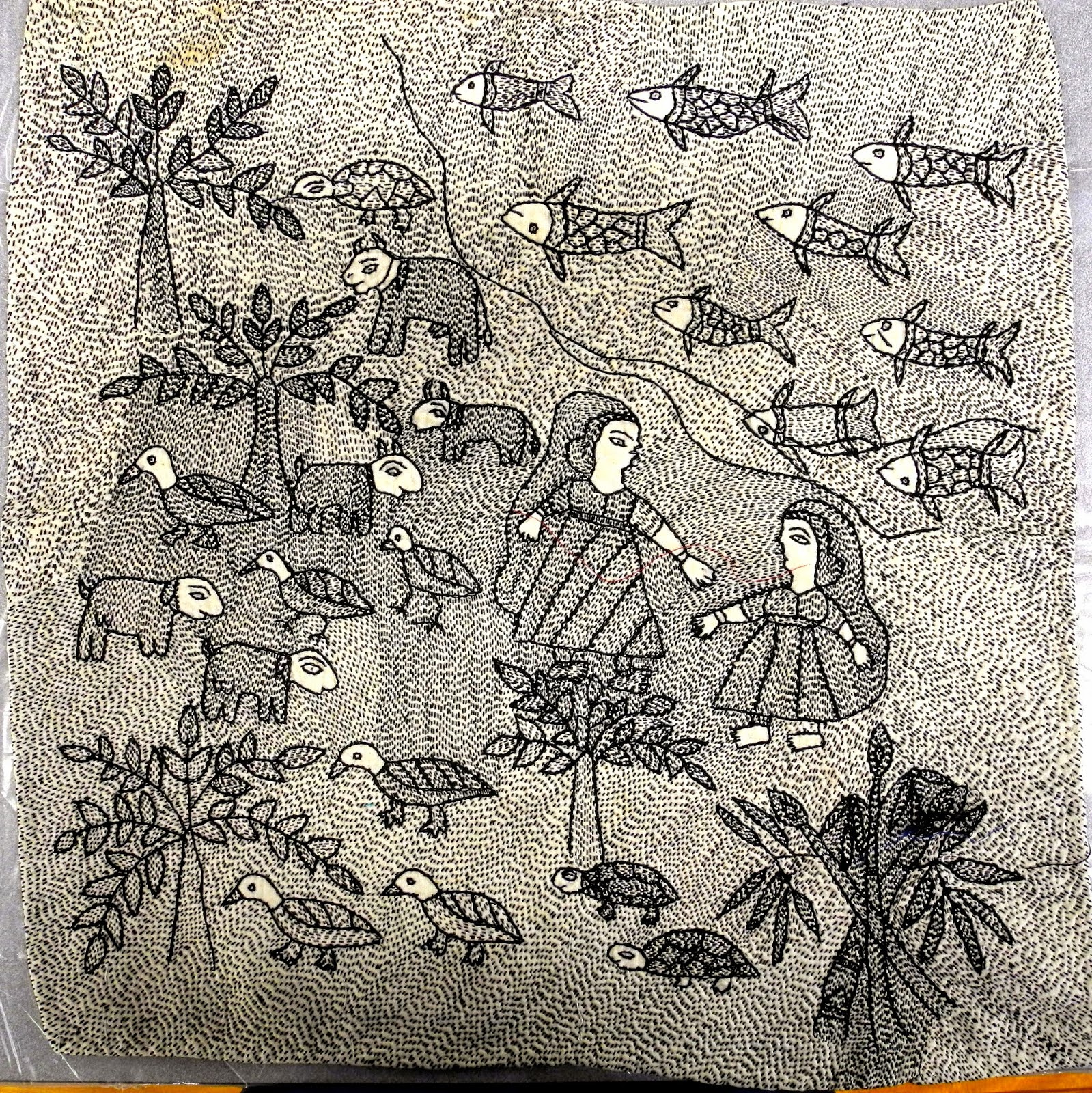Dorothy Caldwell is an artist, author and teacher who offers a workshop titled "Human Marks". I have admired her work for a long time and heard that she was an excellent teacher. She taught this workshop last week at
Nancy Crow's Barn in Baltimore, Ohio.
It was 5 days with an incredibly generous instructor. Dorothy explained that we are always leaving our marks, and that over the 5 days we would become more aware of them, and notice them everywhere around us.
One of the first techniques we learned to make marks was through Kantha stitch. It is a technique that Dorothy learned about while in Bihar, a rural area in India. Kantha means "rags". It was a method developed to reuse old clothing or fabrics - mending while making it a lovely piece.
As in all very poor areas, fabric is precious, so it is mended over and over so it can still be used. Some of the pieces are started by a mother and then passed down over generations to continue the Kantha stitching.
Dorothy had some wonderful examples. Here are a few - they include social commentary, as they illustrate women in the street, needing a safe place to go for medical care. They are examples of using different threads on different fabrics - but they all use the same pattern. Starting with the upper left hand corner and going clockwise: white thread on black fabric, black thread on white fabric, colored threads on white fabric and colored threads on black fabric.
Part of the workshop includes learning to make books with your work, so our first project was to make a wrapping for one of the books, using Kantha stitching. I've never been much of a stitcher, but I was soon hooked. Dorothy encouraged us to carry our stitching with us everywhere, and once I started doing that, it was hard to stop stitching!
I started my book wrap on a very dense black fabric, and after 2 days realized it was taking forever because it was so hard to stitch through! I started over with a Kona cotton, and the needle went through it effortlessly.
On the last day we were able to put all of the book wraps on the table and enjoy looking at how different our styles and subject matter were.
Here are a couple more images from Dorothy's samples:
 |
| Notice the shadows from the trees around the woman and child and some animals? |
 |
| This detail image shows how different directions of the same stitch added depth and complexity. |
 |
| This is the same image, but white thread on black. I am really drawn to the black and white stitching. The graphic quality is appealing. |
I did a little research, and see that there are video's showing stitching. And an Indian woman named
Deepa posted about Kantha on her blog.
I will write additional posts about the workshop in the next few weeks. I'm off to stitch!













